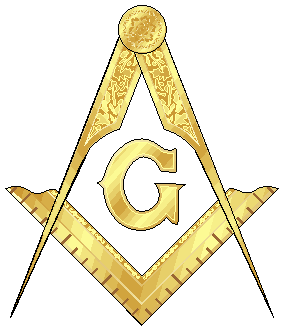

James
M. Simms
Lodge of Research

|
|
James
M. Simms |
|
History of James M. Simms Lodge of Research
|
The
James M. Simms Lodge of Research got it's start at the Grand Lodge Session
of the Most Worshipful Prince Hall Grand This is something that is long over due for Prince Hall Masonry. There has not been a Research Lodge for Prince Hall Masonry since the first and only Research Lodge that came under the jurisdiction of the Most Worshipful Prince Hall Grand Lodge of New York titled "PHLORONY" Prince Hall Lodge of Research of New York, which was started in 1943 under the stewardship of R. W. Harry Williamson Past Deputy Grand Master. The James M. Simms Research Lodge was named after the founder of Prince Hall Freemasonry in the State of Georgia, who also served as the First Grand Master. |
|
Brief history of James Merilus Simms (Born in Savannah, Georgia on December 27, 1823; died July 9, 1912 in Savannah, Georgia). Reverend Simms, his mother Minda Campbell and brother Thomas were owned by the Potter Family. She was able to save three hundred dollars to purchase her son's freedom from slavery. In his youth, it was a crime to teach blacks to read and write. Young James Simms acquired the ability to read and write when his slave owning white father sent for a French tutor to teach the white children on the plantation. He allowed his slave son to be taught not only to read and write, but also to learn several languages. [1]Simms then taught many slaves to read and write at his school that was located on Berin Street near Jefferson Street. Simms [2]was converted in March, 1841, and was baptized into the fellowship of the First African Baptist Church the first Sunday in April, 1841, by Rev. Marshall. A
Carpenter by trade Simms was appointed one of the building committee
members of the church. He was elected deacon January 29th, 1860. Simms was caught teaching a room full of children and was reprimanded and publicly whipped for his actions, he was also fined $50.00. Simms is the only black person known to be punished in Savannah for teaching blacks to read and write. When the Civil War reached Savannah Simms saw his fellow blacks being forced to work for the Confederate cause by repairing buildings and Forts, he found the activity so repugnant that he left the city of Savannah on 2 February 1864 and went to Trinidad and then to Boston, Massachusetts for one year. While in Boston Simms Joined the Union Army. Simms was made a Mason, and was commissioned to establish Masonry in the South, he was also made a Minister by the Twelfth Street Baptist Church on April 17 1864 by Rev. Leonard A. Grimes; Reymond, of New York; Rev. Thompson, of Boston; Randolph Charlton, of Boston. The American Baptist Home Mission Society charged him with evangelizing black in Georgia and Florida. By
1871 the governor had appointed Brother Simms a Judge on the Chatham
County District Court .
[1]The
Savannah Bar Association met in the City Court room to review the
appointment of Brother Simms.
The Committee reported that Simms had “no right to exercise the
function of a District Court Judge.
The White press reported “The newly appointed nigger Judge James
M. Simms,” had declared that if the Bar of Chatham County refused to
recognize him officially, he would forward his commission to General
Alfred Terry, and have him indorse it.
The judgeship was abandoned soon after it was established, Brother
Simms then went to work as a customs official. Brother Simms held a
meeting with about 150 blacks at the First African Baptist Church in March
of 1891. He informed them that the Georgia Legislature decided to
establish a black college “The Georgia Industrial College for Colored
Youth” and that he and a group of black had offered a sum of money and
land in an attempt to have the college located in Savannah.
A wish that was granted, the Savannah Tribune stated “the most
important event in the history of colored people in Georgia since their
emancipation, is the establishment of the above named college which went
on to become Savannah State University.
Brother Simms served as the Colleges first proctor under the
direction of President Richard R. Wright Sr. In 1888 he wrote The First Colored Baptist Church in North America, which entailed the history of First Bryan Baptist Church. [2]Reverend Simms , born a slave, became, through perseverance and an indomitable will to succeed, a model leader of black Savannah who carried his mother’s admonition to “uplift his race” died Tuesday, July 9, 1912 at the age of 89. His funeral was conducted at the First Bryan Baptist Church. Reverend Daniel Wright presided. The Most Worshipful Prince Hall Grand Lodge of Georgia placed a monument over Grand Master Simms grave June 1920. Over five hundred Masons marched from the old Masonic Temple on Gwinnett Street near West Broad to Laurel Grove Cemetery South to dedicate the monument. Sol. C. Johnson, along with H. R. Butler, who at that time, was Grand Master for Most Worshipful Prince Hall Grand Lodge of Georgia and Reverend George Dwelle who had participated in the organization of the Grand Lodge in 1870 were present at the ceremony for Simms. [1] Yet
with a steady beat Biographies of Early black Savannah ; Charles
Lwanga Hoskins [2] Yet
with a steady beat Biographies of Early black Savannah ; Charles
Lwanga Hoskins [1] Yet
with a steady beat Biographies of Early black Savannah ; Charles
Lwanga Hoskins [2]
History of the First African Baptist Church,
From its Organization, January 20th, 1788, to July 1st, 1888: E.K.
Love
|